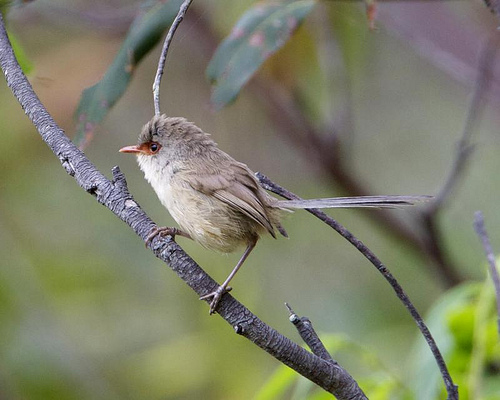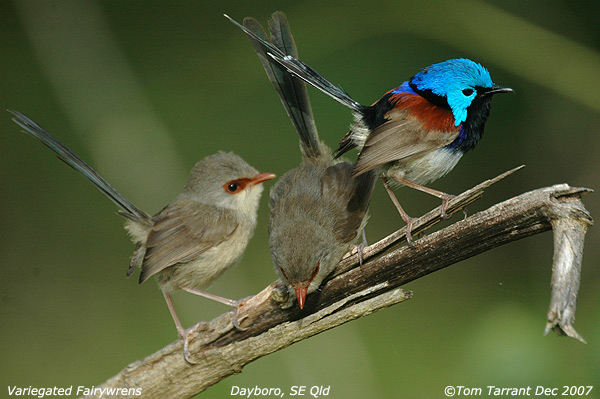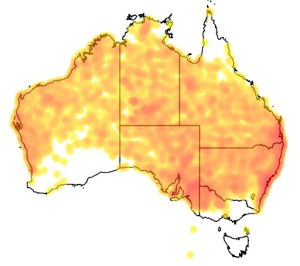Colours
Distinguishing features
It is notable for its marked sexual dimorphism: males adopting a highly visible breeding plumage of brilliant iridescent blue and chestnut contrasting with black and grey-brown. The brightly coloured crown and ear tufts are prominently featured in breeding displays. The male in breeding plumage has striking bright blue ear coverts, with the crown often slightly darker, a black throat and nape, a royal blue upper back, chestnut shoulders and a bluish-grey tail. The wings are grey-brown and the belly creamy white.
Non-breeding males, females and juveniles are predominantly grey-brown in colour.
All males have a black bill and lores (eye-ring and bare skin between eyes and bill), while females have a red-brown bill and bright rufous lores.
Immature males will develop black bills by six months of age and moult into breeding plumage the first breeding season after hatching, though this may be incomplete with residual brownish plumage and may take another year or two to perfect.
Both sexes moult in autumn after breeding, with males assuming an eclipse non-breeding plumage. They will moult again into nuptial plumage in winter or spring.
The blue coloured plumage, particularly the ear-coverts, of the breeding males is highly iridescent due to the flattened and twisted surface of the barbules. The blue plumage also reflects ultraviolet light strongly, and so may be even more prominent to other fairywrens, whose colour vision extends into that part of the spectrum. (Wikipedia)
Size
- From 14 cm to 15 cm (Length of specimen)
Weight
- From 0.006 kg to 0.011 kg
Wingspan
- Wingspan data is not yet available.
Synonyms
Distribution
Distribution and habitat preferences
Distributed over 90% of the Australian continent, it is found in scrubland with plenty of vegetation providing dense cover. It prefers rocky outcrops and patches of Acacia, Eremophila or Lignum (Muehlenbeckia florulenta) in inland and northern Australia. (Wikipedia)
Diet
It consumes a wide range of small creatures, mostly insects, including ants, grasshoppers, bugs, flies, weevils and various larvae.
UThey mostly forage deep inside shrubby vegetation, which is less than 2 m above the ground. (Wikipedia)




